Belarusian President In Tehran To Expand Ties
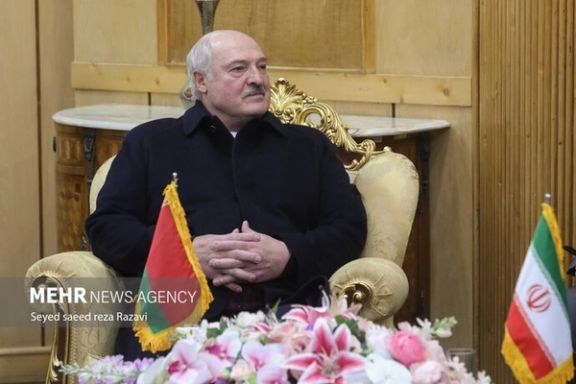
The President of Belarus is on a visit to Tehran to discuss bilateral ties between the two economically challenged nations and close Russia allies.

The President of Belarus is on a visit to Tehran to discuss bilateral ties between the two economically challenged nations and close Russia allies.
Alexander Lukashenko, dubbed "the last dictator of Europe", will meet with Iran’s First Vice-President Mohammad Mokhber, parliament speaker Mohammad-Baqer Qalibaf, and Iran’s ruler Ali Khamenei, Iran’s supreme leader.
The visit will focus on“emphasis on trade and economic cooperation,” including industry, agriculture, transport, and logistics, according to Lukashenko’s press agency.
“Special attention will be paid to the situation in the region and the world in general,” the press release stated, adding that several agreements on “areas of mutual interest” will be signed.
Alexander Lukashenko, Putin’s ally in the war against Ukraine, said last month that the global situation of Iran and Belarus has forced the two countries to have closer links.
Belarus mainly exports potassium fertilizer, wood and fibers to Iran and imports food products from the Islamic Republic. Annual trade between the two dictatorships reached a peak of just $100 million in 2022, the trip aiming to increase that significantly.
The presidents of Iran and Belarus made the pledge for greater cooperation on the sidelines of the 16th Shanghai Cooperation Organization summit in Samarkand in September, to be led by the two countries’ foreign ministers.
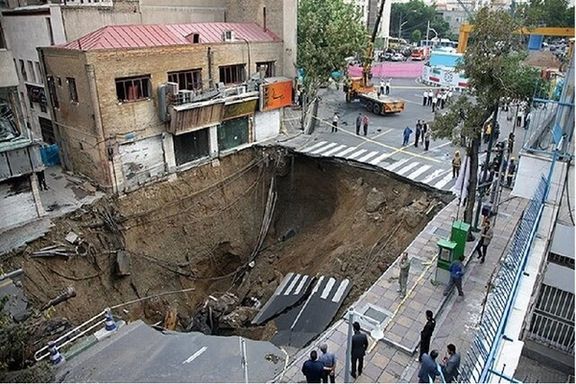
Experts in Iran warn the current land subsidence situation in Iran is “critical", claiming it puts the lives of more than 39 million people at risk.
Several factors have caused the situation to reach breaking point, including dam construction, climate change, inefficient water consumption by agriculture and industries, and the use of underground aquifers as sources for illegal agricultural water extraction wells.
Ali Beitollahi, heading the disaster task force on the issue at the Road, Housing and Urban Development Research Center of Iran, said the approximate area of subsidence zones in the country is now 18.5 million hectares, almost 11% of Iran's total area.
Beitollahi has been warning of the danger for several years, and says if action is not taken, it endangers the lives of nearly 49% of Iran’s population.
He said, ”Three hundred and eighty cities and 9,200 villages are at risk of land subsidence, and in some cases the entire area of the cities are located in the subsidence zones.”
Tehran, Razavi Khorasan in the east and Esfahan in central Iran are the provinces most at risk, Razavi Khorasan in the most imminent danger.
However, international reports claim the danger is even worse, nearing a humanitarian crisis. Science journal claims that more than 98% of Iran's 1.648 million km of land faces land subsidence.

Internationally, a rate of subsidence greater than 4mm per year is considered a crisis and yet Iran's land is sinking at an astonishing rate of 6cm per year as a result of 25 years of water level decline in the plains.
Ground subsidence in urban areas have resulted in power outages, bursting of gas pipes, deformation of rails, emergence of sinkholes, tilting of buildings, the appearance of cracks and ditches in roads and even loss of human life.
Continued water level declines will reduce the ground's water permeability and turn fertile plains into barren deserts.
Kamran Davari from Ferdowsi University of Mashhad, told ISNA state news agency that many cases of subsidence have been reported from some areas in the Mashhad plain in the northeast where subsidence is between at least 3cms and a staggering 15-17.5cms in the northwest of Mashhad city. Davari said the situation had reached “hyper critical”.
Based on the underground water quality zoning map, the areas with good water quality have decreased drastically in Mashhad over the past decade.
"If the electrical conductivity of water exceeds 1,500, it indicates that the water is no longer suitable for drinking,” explained Davari. “Unfortunately, in the eastern areas of Mashhad, the electrical conductivity is currently between 3,000 to 5,000.”
The journal Taylor & Francis Online confirms the fears. In research last year, it claimed: “The province of Razavi Khorasan in the northeast of Iran had the largest area (about 3500 km2) vulnerable to land subsidence occurrence”.
It warned of other risk-prone areas in the future. “Based on the land subsidence susceptibility map, the provinces of Ardabil, Kurdistan, West and East Azerbaijan, Sistan and Baluchistan and Kermanshah, although not currently undergoing a high rate of land subsidence, will be at high risk of severe land subsidence in the future.”

A committee chairman in the US House of Representatives says the Chinese-mediated agreement between Iran and Saudi Arabia to restore diplomatic ties is “very troubling.”
Michael R. Turner, Republican from Ohio has said in an interview with ABC News that it is disappointing to see Saudi Arabia look elsewhere except the US for support.
“I think that, of course, is a reflection on the Biden administration,” Turner said on Sunday, adding that “It’s not unexpected that [Saudi Arabia] might look elsewhere for support. It certainly is very unexpected and certainly very troubling and disappointing that they would turn to Iran.”
The Islamic Republic and Saudi Arabia agreed to re-establish diplomatic ties after Chinese-brokered talks in Beijing. Following five days of negotiations, it was agreed on Friday that the two countries will reinstate embassies and missions after seven years of no diplomatic relations and occasional tensions.
Saudi Arabia severed relations with the Islamic Republic in January 2016 after hardliner supporters of Supreme Leader Ali Khamenei formed mobs and attacked and ransacked its embassy in Tehran and consulate in Mashhad following the execution of a Saudi Shiite cleric.
Turner, who heads the House Intelligence Committee, further criticized the Biden Administration saying US officials have been slow to respond to Riyadh’s military needs.
“The Biden administration appears to be much too timid… in their approach to Russia… and I think even in China they are afraid to provoke,” Turner added. “They are absolutely emerging as a military threat to the United States. I think we need to respond and respond very strongly.”
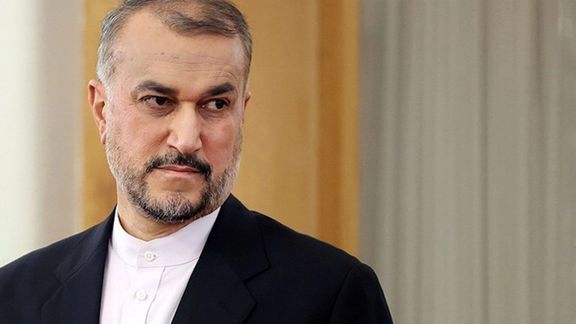
While Islamic Republic’s foreign minister says Iran and the US have reached a prisoner exchange deal, the Biden administration dismissed the claim as a “cruel lie.”
Iran’s foreign minister Hossein Amir-Abdollahian told state TV Sunday that “Regarding the exchange of current prisoners between Iran and the US, we have reached an agreement within the past few days. If everything goes well on the American side, I think we will witness a prisoner exchange in the near future. We see this as an entirely humanitarian case.”
A White House official immediately denied Amir-Abdollahian's statement about the prisoner swap, reiterating that the United States was committed to securing the release of Americans held in Iran. Amir-Abdollahian claimed that a document laying out the exchange had been “indirectly signed and approved” since early March 2022, without saying who would be exchanged in the prisoner swap.
One of several Americans held in Iran is Siamak Namazi, a businessman with dual US-Iranian citizenship, who was sentenced to 10 years in prison in 2016 on charges of espionage and cooperating with the US government. Emad Sharghi, another Iranian-American businessman, was arrested in 2018 when he was working for a tech investment company. Iranian-American environmentalist Morad Tahbaz, who also holds British citizenship, is a third prisoner.
US State Department spokesperson Ned Price told the AP that the comments are “another especially cruel lie that only adds to the suffering of their families.” “We are working relentlessly to secure the release of the three wrongfully detained Americans in Iran,” Price said. “We will not stop until they are reunited with their loved ones.”

A separate statement from a spokesperson with the White House’s National Security Council also called the remarks “false,” adding, “Unfortunately, Iranian officials will not hesitate to make things up, and the latest cruel claim will cause more heartache for the families of Siamak Namazi, Emad Shargi and Morad Tahbaz,” naming the three Americans held on trumped-up espionage charges. "Claims by Iranian officials that we have reached a deal for the release of the US citizens wrongfully held by Iran are false," the spokesperson said.
In recent days, Namazi was allowed to conduct an interview with CNN from Tehran’s notorious Evin prison — something that cannot normally happen in the Islamic Republic’s prisons.

Reuters cited a source briefed on the talks as saying that the prisoner exchange is "closer than it has ever been," but one of the remaining sticking points is linked to $7 billion in Iranian oil funds frozen under US sanctions in South Korea. "The logistics of how these funds will be exchanged and how oversight will be provided are unresolved," added the source.
The source also said that Qatar and Switzerland have been involved in the prisoner exchange talks.
The Islamic Republic, which is holding dozens of Iranian dual nationals and foreigners, has been accused by human rights organization of hostage diplomacy, trying to extract concessions from other countries. Tehran denies this and insists all foreigners are tried according to legal process. However, it has frequently shown readiness for prisoner exchanges and participated in swaps in the past.
Earlier in the day, Iranian media reported that Habib Chaab – also known as Habib Osaivad – an Iranian-Swedish political activist, founder and former leader of Arab Struggle Movement for the Liberation of Ahvaz, was sentenced to death for "terrorism" and "corruption on earth" by the judiciary. Swedish Foreign Minister Tobias Billstrom later on Sunday condemned the sentence as "inhumane," calling it an "irreversible punishment".
There are also reports that the Islamic Republic is ready for a prisoner swap with Belgium after the constitutional court in the European country upheld an exchange treaty. The Constitutional Court of Belgium rejected a request last week to annul the prisoner exchange treaty with the Islamic Republic signed last year that can lead to the release of Iranian diplomat Assadollah Assadi, convicted of terrorism, for Belgian aid worker Olivier Vandecasteele, held hostage in Iran.
Assadi, 50, a former attaché at the Iranian embassy in Austria, was convicted of plotting to bomb a gathering of the exiled opposition group Mujahedin-e Khalq Organization (MEK) near Paris on June 30, 2018. Iran says Nouri’s detention is driven by “false allegations” made by the MEK.
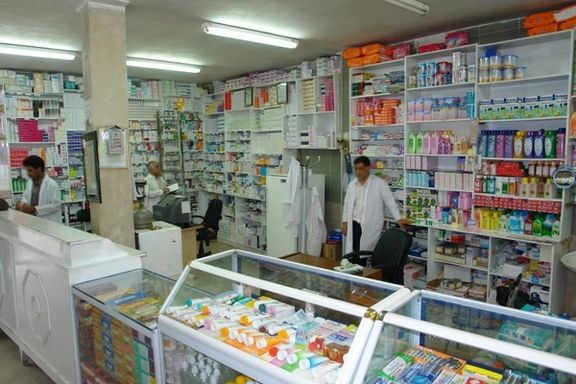
An Iranian lawmaker has warned about shortage of medicines, saying that "the financial resources foreseen in the budget bill for the next Iranian year are not sufficient at all."
Mehr state news agency quoted Hosseinali Shahriari on Sunday that due to insufficient financial resources, "we will face problems regarding medicines and medical equipment next year [beginning March 21]."
According to the Iranian parliamentarian, "officials do not have accurate statistics on medicine supplies, and there is constant shortage of even ordinary drugs."
In current Iranian year, ending March 20, the medicine crisis intensified as people witnessed multifold increase in prices. The government scrapped an import subsidy for food and medications last year.
Iran’s rail fell to more than 600,000 in late February from 300,000 in late August. Although the national currency bounced back in the past ten days it is still down 50 percent compared to six months ago.
Parallel markets including gold, gold bullions, and even vehicles, both domestically produced and foreign made, will immediately reflect the change with higher prices. Essential food items, such as red meat, have already risen to unprecedented highs, making them unaffordable to the majority of people.
Based on a bill approved by the parliament, drug prices were supposed not to increase this year, but according to the head of the parliament's health commission, "this did not happen and the price of many drugs, especially those for diabetic and cardiovascular diseases soared and patients' out-of-pocket payments increased accordingly."
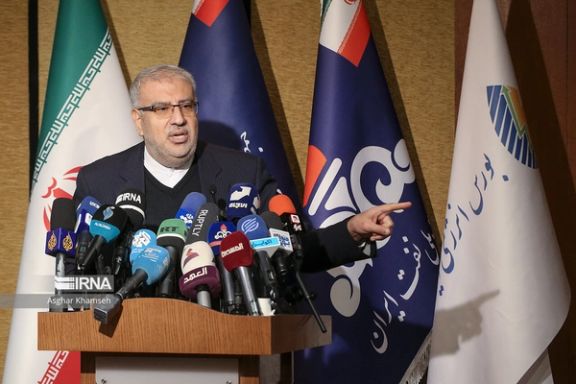
Iran’s oil minister Javad Owji said Sunday the country’s exports are at its highest point since 2018, claiming that $14 billion of oil revenues has been injected into the economy.
His claims come at a time when Iran is is serious need of hard currency, with its national currency extremely weak and volatile.
The oil minister boasted that the country has achieved the new record in exporting oil despite the US sanctions following the US pullout from the 2015 nuclear deal and imposition of all-out measures. Owji claimed that since 2018 when the Trump administration re-imposed sanctions on the Islamic Republic, more and more punitive measures have been put in place as European states, insurance companies, shipping companies, ports and other trade mechanisms are abiding by the US sanctions.
He said that despite the measures, the oil ministry has injected $14 billion into the country’s foreign currency trading services in the past 11 months. He added that Iran’s oil exports have increased 190 million barrels compared from two years ago -- from March 2020 to March 2021 -- and 83 million barrels more that the figure of the previous Iranian year, which ended in March 2022. "We exported 83 million more oil barrels since 21st March 2022 compared to the same period last year. This represents 190 million more oil barrels exported compared to the period March 2021 to March 2022," he said.
But bringing back $14 billion from oil exports is a fraction of what Iran needs to balance its budget, without taking into account secret military expenditures and assistance to its proxy forces in the region. Generally, an annual oil export revenue of $60 billion is considered the minimum for Iran to keep its finances afloat.
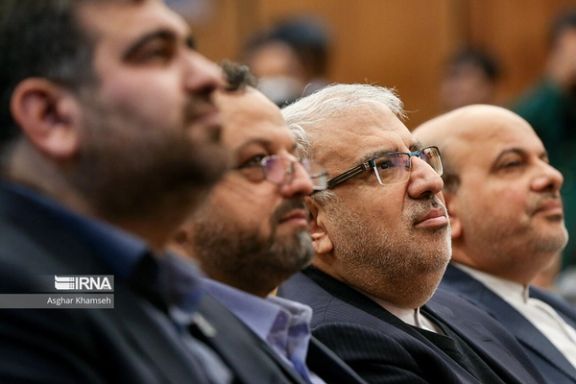
Owji did not disclose the exact number of barrels exported by the country but most of its exports go to Chinese small refineries, but it is not clear how much they pay per barrel or whether they pay in hard currencies to Iran or barter the oil with goods. Iran does not reveal how much it earns from crude oil exports, but if we take the lower estimate of 0.6 million shipments p/d and an average price of $90 p/b for 2022, revenues should total $20-22 billion for the 12 months of 2022.
While many oil industry sources say Iran exports around one million barrels of crude per day, others believe the volume is much less and the income modest.
TankerTrackers, Vortexa, Kpler, and other sources estimate Iran exported anywhere from 810,000 to 1.2 million barrels of crude oil per day in recent months. Iran keeps the export volume secret, but top officials constantly claim revenues are increasing.
In recent days, Iran’s currency rial has gained against major international currencies after a political rapprochement with Saudi Arabia that unlocked diplomatic channels between the two countries after seven years. The rial closed at over 450,000 against the US dollar on Saturday, up from a historic low of 600,000 in late February.
Elsewhere in his remarks, Owji also claimed that the Islamic Republic and Saudi Arabia will bolster their cooperation in the framework of OPEC. The CEO of Saudi Arabian Oil Group -- or simply Aramco -- Amin H. Nasser says Saudi-Iran agreement to mend relations will enhance regional stability and have a positive impact on the global oil market.
He said spare capacity remained tight at 2 million barrels per day, while demand for jet fuel was increasing alongside China's re-opening from tight Covid restrictions.
"If you consider China opening up and a pick-up in jet fuels and very limited spare capacity, we are talking 2 million barrels, so as I said we are cautiously optimistic in the short to midterm and the market will remain tightly balanced," he said.